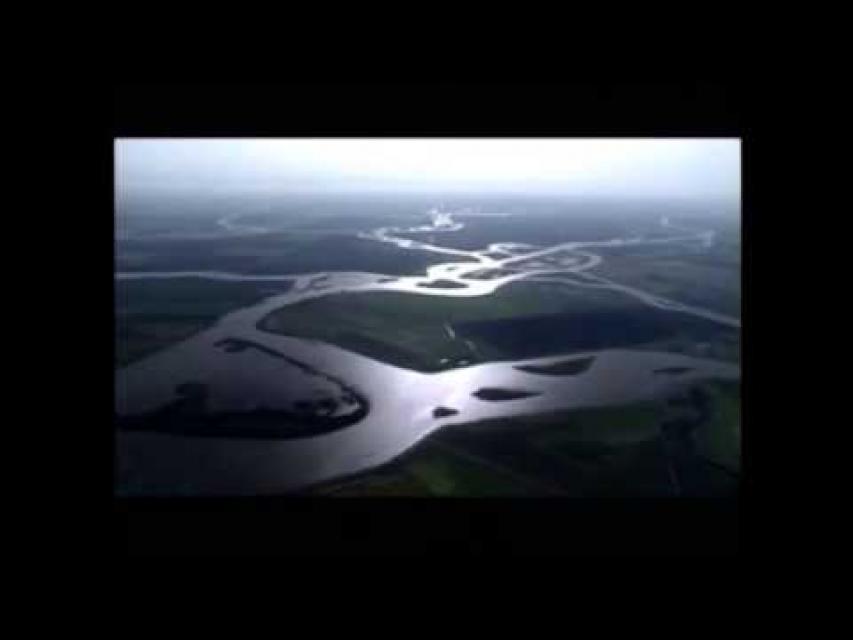Sacramento-San Joaquin Delta Levees
Roughly 1,115 miles of levees protect farms, cities, schools and people in and around the Sacramento-San Joaquin Delta, a crucial conduit for California’s overall water supply. But the Delta’s levees are vulnerable to failure due to floods, earthquakes and rising sea levels brought about by climate change. A widespread failure could imperil the state’s water supply.
Since the 19th century, levees — from the French word ‘lever’, or ‘to raise’ — have been erected to protect “reclaimed” marshland, popularly referred to as Delta islands. The levees were built to prevent flooding and allow cultivation of the rich soil while protecting public infrastructure such as highways and pipelines.
Farmers first thought levees 4 feet high and 12 feet at the base would protect Delta lands from tides and river overflow, but that proved inadequate for Delta peat soils.
Progressively higher levees were built to keep the surrounding waters out, the lands were pumped dry and the marsh was transformed into productive island farms, mostly below sea level.
Today, some islands are 25 feet or more below sea level and beneath the water level in the surrounding channels. Climate change also portends more drastic rises in water levels, adding even more pressure on critical levees.
Sacramento-San Joaquin Delta Levees Overview
Delta levees are classified as project or non-project levees. Project levees are part of the Federal Flood Control Project and are built to higher standards that comply with U.S. Army Corps of Engineers guidelines.
Delta levees are distinguished from river levees in that they are constantly holding back water, making them more comparable to dams. Unlike dams, however, Delta levees were not constructed with strict engineering standards to withstand the constant pressure of water from the daily cycle of tides, wind and boat wakes.
Once complete, the levees are maintained by local agencies and periodically inspected by the Corps. Non-project levees, comprising 65 percent of Delta levees, are those constructed and maintained by island landowners or local reclamation districts. These levees are generally built to an agricultural standard and are typically less stable than project levees.
On many Delta islands, the levee foundations are composed of the same peat soil formed by the marsh’s original vegetation. This organic soil is rich in nutrients, but it oxidizes (vaporizes quickly), resulting in as much as 1.5 inches of soil loss per year. Oxidation, combined with compaction and settling, is known as subsidence—a critical problem because the process puts additional stress on levees.
When levees fail, water rushes into the lower-than-sea level islands, pulling in saltwater from San Francisco Bay and reducing water quality. Widespread flooding due to levee failure could force a long-term shutdown of the State Water Project and federal Central Valley Project pumps in the south Delta near Tracy that supply much of California with water. Delta levees also protect an extensive network of public utilities (pipelines, highways, rail lines), preserve extensive farmland and facilitate significant recreational opportunities.
Since 1980, 27 Delta islands have been partially or completely flooded, including a 2004 levee break at Upper Jones Tract that cost about $90 million to repair. As with all working structures, the Delta levees are continually deteriorating and must be regularly maintained, something that costs millions of dollars annually.
In some cases, allowing some Delta islands such as Little Holland Tract and Liberty Island to flood can be helpful as a release valve for excess water. Similarly, farmland set aside for deliberate flooding is also being explored. These flooded spaces can also provide ecosystem benefits.
Sacramento-San Joaquin Delta Levees Protection
The Sacramento-San Joaquin Delta’s vulnerability to natural disaster has been highlighted by scientific analyses calculating the probability of levee failure from floods or earthquakes.
Hurricane Katrina in 2005, for instance, demonstrated the level of destruction that could be unleashed by a series of breached levees. Although levee vulnerability in California’s Delta is not easy to quantify, it is estimated that multiple levee breaches are very likely in the event of a large earthquake. Similarly, California’s capital, Sacramento, is one of the most at-risk cities for a major flood in the United States.
Following significant floods in 1986, California’s legislature enacted the Delta Flood Control Protection Act to improve funding for levee maintenance and repair. The flood protection act provided $12 million a year for 10 years for levee improvements, and developed flood control plans for eight western Delta islands and the communities of Thornton and Walnut Grove.
Since then, the flood control protection plan has been extended and has significantly improved levee maintenance, repair, and emergency response in the Delta.
Additionally, two bond measures passed in November 2006 allocated more funds for flood control in the Delta. And in 2018, yet another bond measure allocated $1.27 billion for levee repairs.










